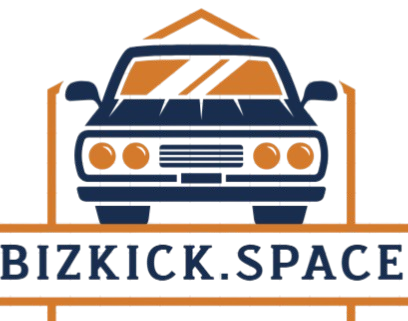Understanding Everyday Tasks
Everyday tasks encompass a wide range of activities that professionals engage in across various fields, from administrative duties to complex problem-solving processes. These tasks can vary significantly depending on the environment, such as corporate settings, educational institutions, or creative industries. Within these contexts, professionals often juggle multiple responsibilities that require a careful balance of efficiency and effectiveness to maximize productivity.
Administrative duties often serve as the backbone of everyday operations in many organizations. These tasks include managing correspondence, scheduling meetings, and maintaining records. The effective execution of these activities allows teams to stay organized and focused on their core objectives. In settings such as educational institutions, everyday tasks may involve lesson planning, classroom management, and assessment of student progress. Here, educators must employ various models to ensure they address the diverse needs of their students while fostering an engaging learning environment.
On the other hand, complex problem-solving tasks often arise within professional settings that demand innovative solutions. In sectors like technology and healthcare, professionals frequently encounter challenges that require analytical thinking and collaborative approaches. The application of different models is essential in these scenarios, as they provide structured frameworks for tackling such challenges. By understanding the context in which tasks are performed, professionals can utilize the most suitable models to enhance their workflows.
In summary, recognizing the nature of everyday tasks and the environments in which they take place is crucial for professionals aiming to improve productivity. By integrating appropriate models, they can navigate their daily responsibilities more effectively, leading to better outcomes in both individual and organizational performance.
Popular Models Used by Professionals
In the realm of professional task management, various models have emerged, each tailored to enhance productivity and organization in different contexts. Among the most popular is the Eisenhower Matrix, which assists individuals in prioritizing tasks based on urgency and importance. This model divides tasks into four quadrants—urgent and important, important but not urgent, urgent but not important, and neither urgent nor important—allowing users to allocate their time and energy effectively. By visualizing tasks in this manner, professionals can make informed decisions on where to focus their efforts.
Another widely adopted model is the Agile Methodology, originally developed for software development but now applied broadly across numerous industries. Agile emphasizes flexibility, collaboration, and customer satisfaction through iterative progress and responsiveness to change. Professionals utilizing this model often work in short cycles, known as sprints, promoting continuous feedback and improvement. This approach encourages a dynamic work environment where teams can swiftly adapt to challenges and refine their processes, ensuring a high level of productivity and engagement.
The Pomodoro Technique is also notable for enhancing focus and managing time efficiently. Named after the tomato-shaped kitchen timer used by its creator, Francesco Cirillo, this technique breaks work into intervals, typically 25 minutes in length, followed by short breaks. This structured method helps professionals maintain their concentration over extended periods, reducing burnout and improving overall satisfaction with their work. It has gained traction among various professionals seeking to optimize their daily tasks without sacrificing quality.
In summary, the diverse range of models available for task management provides professionals with valuable frameworks to enhance productivity and efficiency. Models such as the Eisenhower Matrix, Agile Methodology, and the Pomodoro Technique each present distinct principles and applications tailored to various professional needs. By understanding and implementing these widely adopted methods, individuals can effectively tackle their everyday tasks.
Factors Influencing Model Choice
The selection of a model for managing everyday tasks is a critical decision that professionals encounter in their work environments. Several factors influence this choice, most notably the nature of the task at hand. Different tasks may require distinct approaches; for instance, creative tasks might benefit from more flexible and adaptive models, allowing for brainstorming, whereas task-oriented functions may favor structured methodologies that prioritize efficiency and accountability. Understanding the inherent characteristics of a task can significantly guide professionals in choosing models that enhance productivity.
Another essential aspect is individual working styles. Each professional has distinctive preferences and strengths that shape their approach to task management. Some may thrive under structured regimes, while others prefer a more fluid and informal process. This variation in working styles highlights the importance of selecting models that align with personal habits and motivations, thereby fostering a more conducive environment for accomplishing daily responsibilities.
Team dynamics also play a crucial role in the choice of management models. The interactions, communication patterns, and collaboration levels within a team can deeply impact the effectiveness of any adopted model. Professionals must consider how the model will facilitate teamwork and whether it encourages participation or fosters competition. Selecting the appropriate model facilitates collaboration, ensuring that each team member can contribute effectively to the group’s objectives.
Finally, specific industry requirements cannot be overlooked. Different sectors may have distinct regulations, standards, or cultural practices that influence the effectiveness of particular models. For instance, the healthcare industry prioritizes compliance and risk management, while tech firms may emphasize innovation and agility. As such, these industry-specific needs can lead professionals to adapt or customize their chosen models for enhanced effectiveness, ensuring that daily tasks are managed in a manner that aligns with both organizational goals and regulatory demands.
Case Studies: Successful Model Implementation
Numerous professionals and organizations across various sectors have successfully adopted popular models to enhance their operational efficiency and overall effectiveness. These case studies not only demonstrate the applicability of these models but also provide valuable insights into the challenges faced during implementation, the chosen strategies, and the outcomes achieved.
One notable example is a healthcare organization that implemented the Lean model to streamline its patient care processes. Prior to adopting this approach, the organization struggled with long wait times and inefficient resource allocation. By applying Lean principles, the team identified bottlenecks in the patient flow and prescribed targeted solutions, which included cross-training staff and optimizing appointment scheduling. As a result, patient wait times were reduced by 30%, significantly improving patient satisfaction scores and operational efficiency.
Another instructive case study can be found in the tech sector, where a software development company embraced the Agile model. This organization was facing challenges with project management, particularly in meeting tight deadlines and adapting to changing client requirements. By transitioning to an Agile framework, the development team implemented iterative planning and delivered incremental product releases. This not only boosted collaboration among team members but also enhanced client engagement, with on-time project delivery increasing from 65% to 90% over a span of six months.
In the field of education, a public school district adopted the flipped classroom model to foster active learning among students. Before this implementation, teachers observed that students were disengaged during traditional lectures. By reversing the instructional approach and engaging students with pre-class video lessons, teachers created a more interactive classroom environment. This shift led to improved student performance, with test scores rising by an average of 20% in subjects where this model was applied.
These examples illustrate that the thoughtful implementation of popular models can lead to significant improvements in various professional settings. By learning from these case studies, others may find actionable strategies to enhance their own efforts and drive successful outcomes in their respective fields.


No responses yet